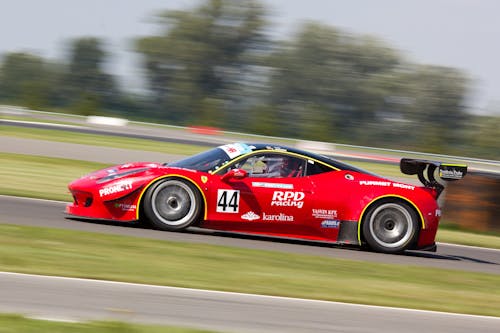Maximizing the Longevity of Your Vehicle's Wrap with Proper Paint Preparation
I. Introduction:
If you're considering getting a vehicle wrap, it's important to understand how your vehicle's paint can affect the outcome. Here's what you need to know:

II. How Vehicle Wraps Work
Vehicle wraps are made of a specialized vinyl material that is designed to adhere to the surface of a vehicle. They can be customized with any design or branding, making them a popular choice for businesses and individuals who want to make a statement on the road. Vehicle wraps can be applied to cars, trucks, vans, and even boats.
III. Factors That Affect Vehicle Wrap Durability
The durability of a vehicle wrap can be affected by several factors, including the condition and age of the paint on your vehicle. Here are some key factors to consider:
A. Paint Condition
If your vehicle's paint is in poor condition, it can affect the adhesion of the vinyl wrap. Paint that is chipped, faded, or peeling may not provide a smooth surface for the vinyl to adhere to, which can result in bubbles or wrinkles in the wrap.
B. Paint Color
The color of your vehicle's paint can also impact the durability of the wrap. Darker colors, such as black or navy blue, can absorb more heat from the sun, which can cause the vinyl to expand and contract more frequently, leading to cracking or lifting.
C. Age of Paint
The age of your vehicle's paint can also impact the durability of the wrap. Paint that is older may be more brittle or have more imperfections, which can affect the adhesion of the vinyl wrap.
D. Type of Paint
The type of paint on your vehicle can also make a difference. Some types of paint, such as matte finishes or textured paints, may not provide a smooth surface for the vinyl to adhere to, which can cause bubbling or lifting.
E. Paint Surface Texture
The texture of your vehicle's paint can also impact the adhesion of the vinyl wrap. Rough or textured paint surfaces may not allow the vinyl to adhere properly, which can cause lifting or bubbling.
IV. How to Prepare Your Vehicle's Paint for a Wrap
A. Clean Your Vehicle's Paint Thoroughly
Before applying a wrap to your vehicle, it's crucial to clean the surface thoroughly. This will ensure that the wrap adheres correctly to the paint and will prevent any dust or debris from getting trapped under the wrap. Start by washing the car with soap and water, then dry it completely before moving on to the next step.
B. Repair Any Paint Damage
If your vehicle's paint has any chips, scratches, or dents, it's essential to repair them before installing a wrap. This will ensure that the wrap adheres properly and will also protect your car's paint from further damage. If the paint damage is severe, you may need to take your car to a professional body shop for repairs.
C. Ensure Proper Adhesion
To ensure that your vehicle's wrap adheres correctly to the paint, the surface needs to be free of any wax or sealant. These products can prevent the adhesive on the wrap from bonding correctly with the paint. You may need to use a wax and grease remover to eliminate any remaining residue.
V. Common Issues with Paint and Vehicle Wraps
A. Fading or Discoloration
One of the most common issues with paint and vehicle wraps is fading or discoloration. This is typically caused by exposure to UV rays, which can cause the colors to fade over time. If you're concerned about this issue, you may want to choose a wrap with UV inhibitors or invest in a protective film that can help to reduce the impact of UV rays.
B. Peeling or Lifting
Another issue that can occur with paint and vehicle wraps is peeling or lifting. This can happen if the wrap wasn't installed correctly, or if the surface wasn't properly prepared before installation. To avoid this issue, it's crucial to choose a reputable installer who has experience with vehicle wraps.
C. Bubbling or Wrinkling
Bubbling or wrinkling can occur if there are air pockets or wrinkles under the wrap. This can be caused by improper installation or by failing to clean the surface correctly before installation. If you notice bubbling or wrinkling, it's essential to address the issue immediately to prevent further damage.
VI. How to Protect Your Vehicle's Paint and Wrap
A. Regular Maintenance
To keep your vehicle's paint and wrap looking their best, it's essential to perform regular maintenance. This includes washing the car regularly and using a protective film to reduce the impact of UV rays. You may also want to consider waxing your car periodically to protect the paint.
B. Proper Cleaning and Care
When it comes to cleaning your vehicle's wrap, it's crucial to use the right products and techniques. Avoid using harsh chemicals or abrasive materials that could damage the wrap or the paint. Instead, use a gentle soap and a soft cloth to wash the car.
C. Using a Protective Film
To protect your vehicle's paint and wrap from damage, you may want to invest in a protective film. This can help to reduce the impact of UV rays, prevent scratches and dents, and keep your car looking its best for longer.
VII. Conclusion
Your vehicle's paint can have a significant impact on how your wrap looks and performs. To ensure that your wrap looks its best and lasts as long as possible, it's crucial to prepare your car's paint properly and protect it from damage. By following the tips outlined in this article, you can help to ensure that your vehicle's paint and wrap look great for years to come.

